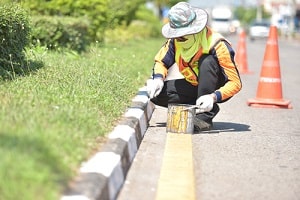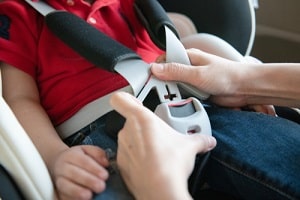Recent Blog Posts
What Are the Signs of Nursing Home Abuse and Neglect in Michigan?
Nursing home abuse and neglect are serious problems throughout the United States, affecting approximately 5 million people each year. Many victims are afraid or uncertain as to how they can stop the abuse, and it is not always easy for a victim’s family members to recognize that abuse is happening. If you have a loved one who is living in an elder care facility, it is important that you watch out for possible signs of abuse so that you can protect your loved one and take legal action.
Common Indicators of Nursing Home Abuse in Grand Rapids
Entrusting your family member’s care with another party is often a difficult decision to make, but in most circumstances, it is necessary if your loved one cannot live on his or her own anymore. Any of the following signs can possibly point to nursing home abuse or neglect:
Can an Adult Be Liable for Injuries After Serving Alcohol to a Minor?

After a June car crash that took the life of an 18-year-old Grand Rapids, MI resident, questions regarding the legal consequences of serving alcohol to a minor have come to the forefront in the local community. In this case, the victim died in a single-car accident and was found to have a high blood alcohol concentration (BAC) level after drinking at a party at the home of one of his classmate’s parents. While charges in the case are still pending, it is important to understand what Michigan law says on this subject in case you or a loved one is involved in a similar drunk driving accident.
Social Host Liability in Michigan
Michigan law statutes are clear that a business, such as a bar, brewery, restaurant, or liquor store, that sells or serves alcohol to a minor or a visibly intoxicated person can be considered liable for injuries and other damages that person causes as a result of his or her intoxication. However, cases may become more complicated when the person who served or provided the alcohol was the host of a party in his or her own home, rather than the operator of a business.
Who Is Liable for Michigan Construction Site Injuries?

Construction can be a dangerous job, involving heavy machinery, close contact with potential electrical and gas hazards, and risky work environments. Medical expenses and lost wages from on-the-job injuries can usually be covered by your employer’s workers’ compensation benefits, but as a recent Michigan case illustrates, many construction site accidents involve third-party liability, which opens up another avenue for pursuing compensation in the form of a personal injury lawsuit.
Dangers for Michigan Road Construction Workers
In recent weeks, a road construction worker in East Michigan was struck and killed by a passing driver in a hit-and-run accident. This incident is one of several that have affected Michigan road construction employees over the years, and it is representative of the risk of injury due to a negligent party that many construction workers face. Road construction workers are particularly susceptible to drunk and distracted drivers, as well as those who fail to obey reduced speed limits in construction zones.
How to Keep Your Young Child Safe While Riding in the Car

As the winter holiday season approaches, many families will be taking to the roads to visit loved ones and join in annual celebrations. For parents with young children, one of the most important items they will have in their vehicles is the child safety seat on which they depend to keep their little ones safe in the event of a car accident. Unfortunately, however, national statistics reveal that four out of every five safety seats on the road are not being used correctly, leaving tiny occupants at risk for serious injury or death.
Seat Base Too Loose
Among the most common mistakes that parents make when installing child safety seats is not making the base of the seat tight enough. A good test to see if the base is installed properly is to grab the base on both sides—in the areas where the seat belt is looped through—and try to move it. The base should not budge more than one inch on either side or when being pulled forward. If the base moves, it is not installed correctly. Car seat safety inspectors recommend placing your knee on the base and putting your weight on it while tightening the seat belt. If you are installing an infant seat, use your elbow during this step. When the belt is as tight as it can go, it is critical to make sure the seat belt locks. This is another step many parents forget, which can have tragic consequences in the event of a collision with another vehicle.
What Are Common Injuries from Michigan Motorcycle Accidents?

In 2018, 134 Michigan motorcyclists lost their lives in fatal accidents, and over 2,000 more were injured. Compared to other vehicle occupants, motorcyclists are at greater risk of severe and catastrophic injuries because their vehicles provide very little physical protection, and unfortunately, Michigan’s auto insurance laws often make it more difficult for injured motorcyclists to obtain the compensation they need. If you have been in a motorcycle accident and suffered one of the following injuries, an experienced attorney can help you understand your options for recovery.
Motorcycle Injuries Can Be Severe
In a car accident, motorcyclists may suffer from both blunt force trauma from the initial collision and additional injuries after being thrown from their vehicles. Some of the most common injuries resulting from motorcycle accidents include:
How Does Michigan’s Car Insurance Law Affect Personal Injury Claims?

A motor vehicle crash can happen in an instant and usually when you least expect it. However, its consequences can be long-lasting depending on the severity of the collision. If you are injured in a car accident in Michigan, the state’s laws provide you with an added layer of protection that many other states do not. This protection comes in the form of no-fault insurance, a mandatory policy included with the required car insurance coverage for all Michigan drivers. However, recent changes to the no-fault insurance law may create complications for vehicle collision victims and increase the need to pursue compensation through a personal injury lawsuit.
What Is Michigan No-Fault Car Insurance?
In Michigan, no-fault car insurance is required Personal Injury Protection (PIP) coverage included in a driver’s own car insurance policy. When a driver is injured in an automobile accident, PIP coverage will pay for many of the driver’s economic damages, regardless of who is at fault for the crash. Specifically, a PIP policy covers:
What Is Negligence?
Many personal injury claims filed following a car accident are based on negligence. If a driver is negligent, that means that he or she failed to exercise reasonable care toward other people on the roadways when operating their vehicle.
Proving negligence requires you to establish these four elements:
- Duty – All motorists have a legal duty to other drivers and parties on the roadways to operate their vehicles in accordance with the law act responsibly behind the wheel.
- Breach of duty – When a driver fails to adhere to traffic laws or drives recklessly, he or she has breached the duty owed to others.
- Causation – The driver’s negligence must have directly and proximately caused the accident and the victim’s injuries and damages.
- Damages – The victim must have suffered injuries and damages as a result of the accident
Common Forms of Driver Negligence
If you have been in a car accident that you did not cause, it is likely that the other driver broke one or more traffic laws. Some of the most common forms of driver negligence include:









